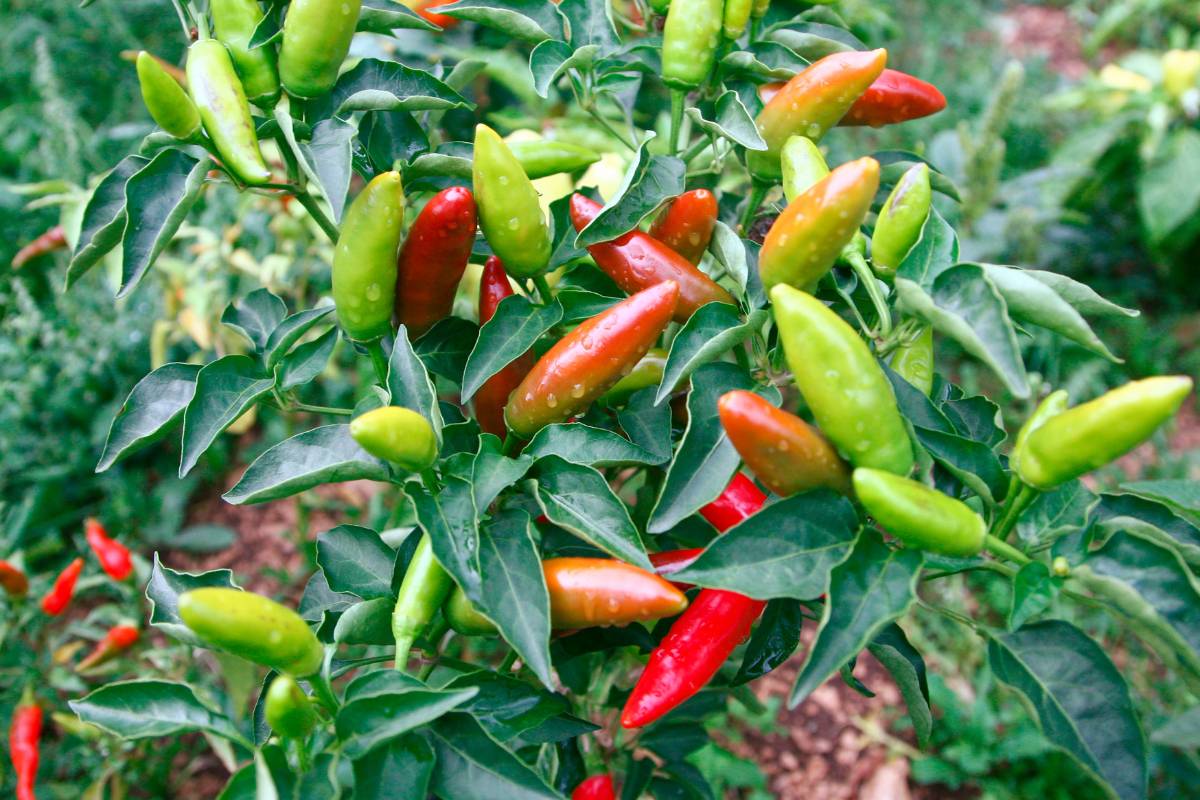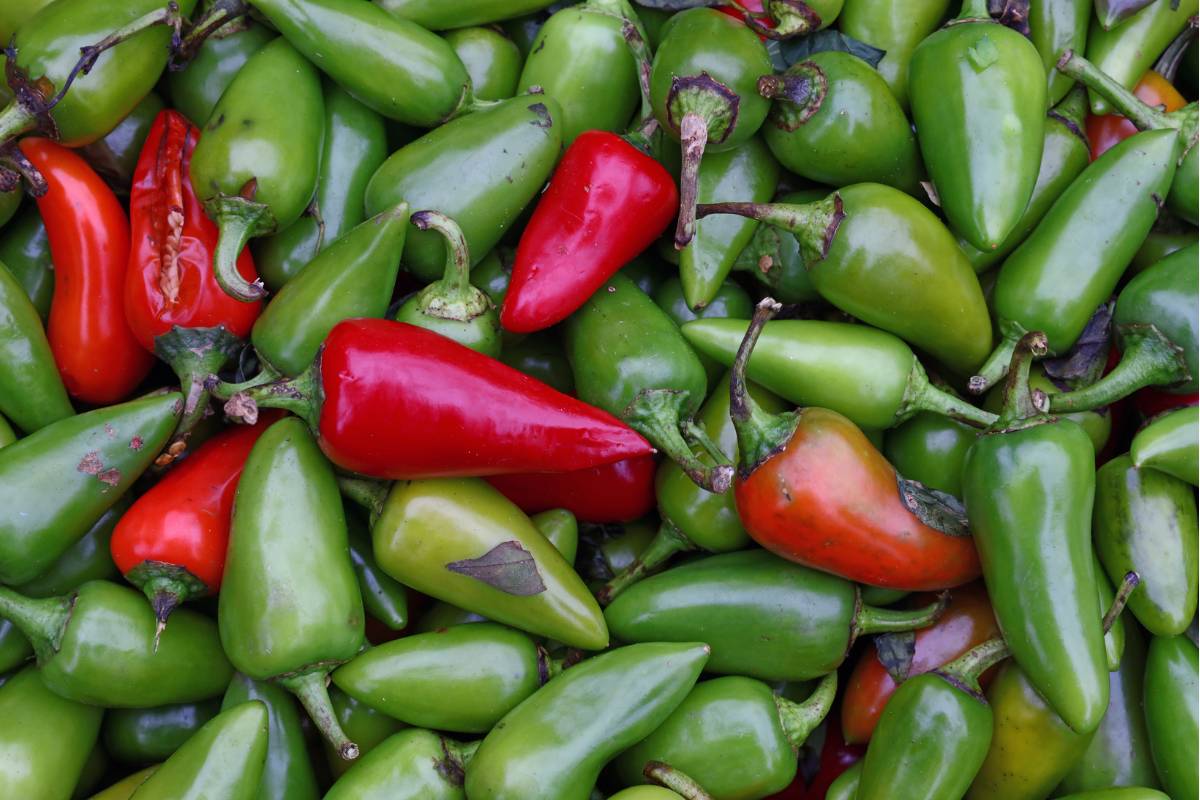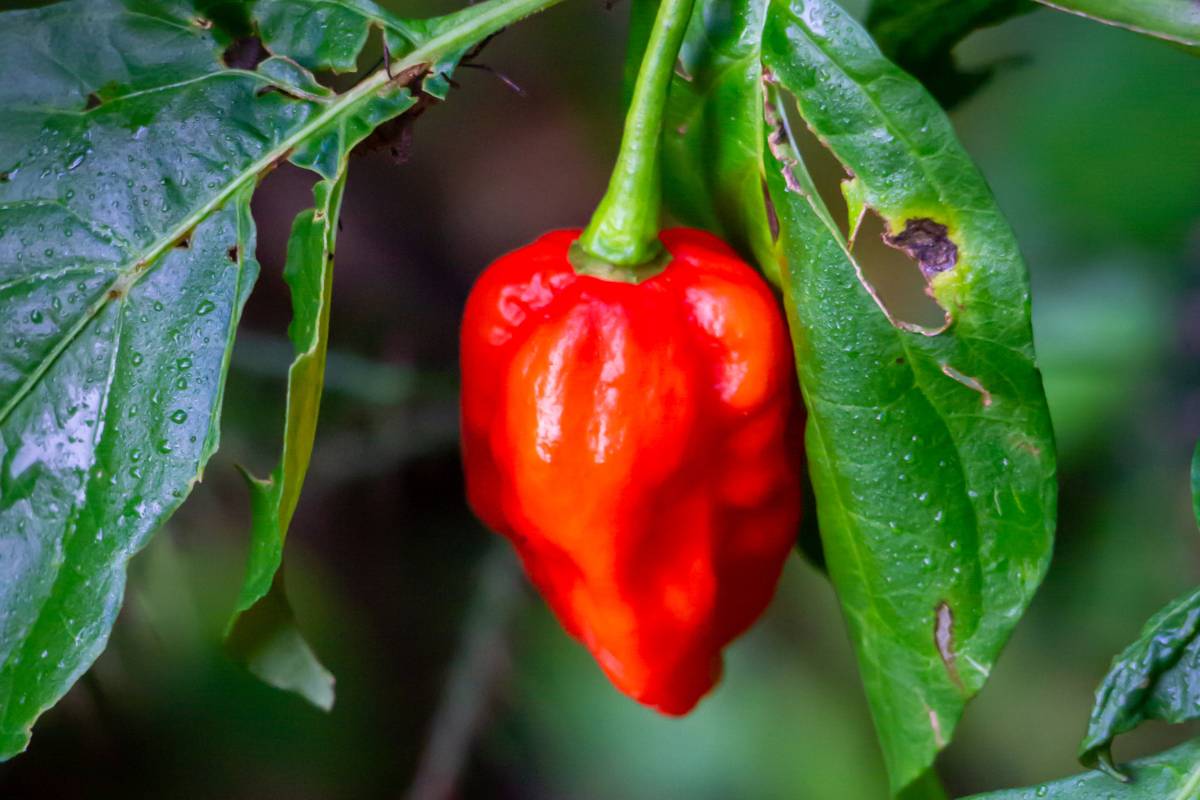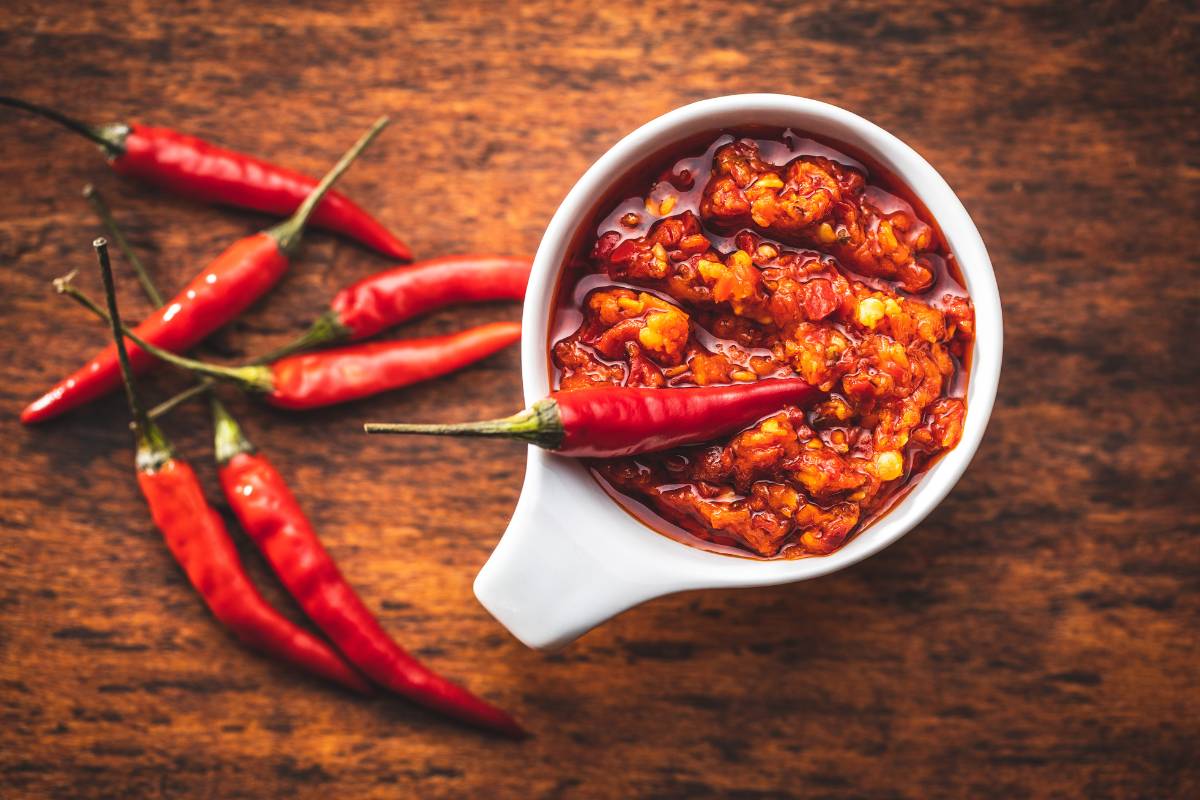The chilli world is packed with flavoursome varieties, from the meek and mild Anaheim up to mouth-burning demons like the Carolina Reaper or Chocolate Bhutlah. But not every chilli lover is a fan of heat for heat's sake, and growing a crop that's too spicy (or too mild!) for your taste is a waste of time, energy and money.
Luckily, it's easy to find out the estimated heat of a chilli variety before deciding to grow your own plants. The strength of an individual pepper type is measured on what's known as the Scoville scale. Here's how to use it when exploring the infinite variety the chilli family has to offer.
What is the Scoville Scale?
Chillies gain their characteristic heat from a chemical called capsaicin, which is present in varying amounts depending on the variety. The Scoville scale measures the capsaicin level, and therefore the chilli's power, with a figure presented in Scoville heat units (SHU). The system is named after pharmacologist Wilbur Scoville, who developed it in 1912, and it's still in use today when rating how intimidating a pepper's heat will be.
How Is a Chilli Pepper's Heat Measured?
The traditional way of measuring a pepper's Scoville rating is to extract the heat-producing capsaicin using alcohol as a solvent, and then dilute it in sugar water until its heat can no longer be detected by a panel of trained human taste testers. The number of dilutions needed determines the pepper's rating on the Scoville scale. For example, a typical jalapeno will need 5,000 dilutions to remove its heat completely, and so it has a rating of 5,000 SHU.
While this method gives a good guide to a chilli's heat, it relies on the subjective rating of testers as well as the varying efficiency of the capsaicin extraction process. To avoid these potential inconsistencies, the food industry has developed a new analysis method using a chemical technique called high-performance liquid chromatography (HPLC). This modern approach directly measures the capsaicin concentration before converting the figure to the Scoville equivalent. It allows precise control over the amount of heat added to commercial sauces and other chilli-based products.
The ripeness and timing of harvest of individual chillies, and to some extent their growing conditions, also affect their heat. Nevertheless, the Scoville scale gives a good general guide to whether a chilli will be mild, mid-strength or mind-blowingly hot.
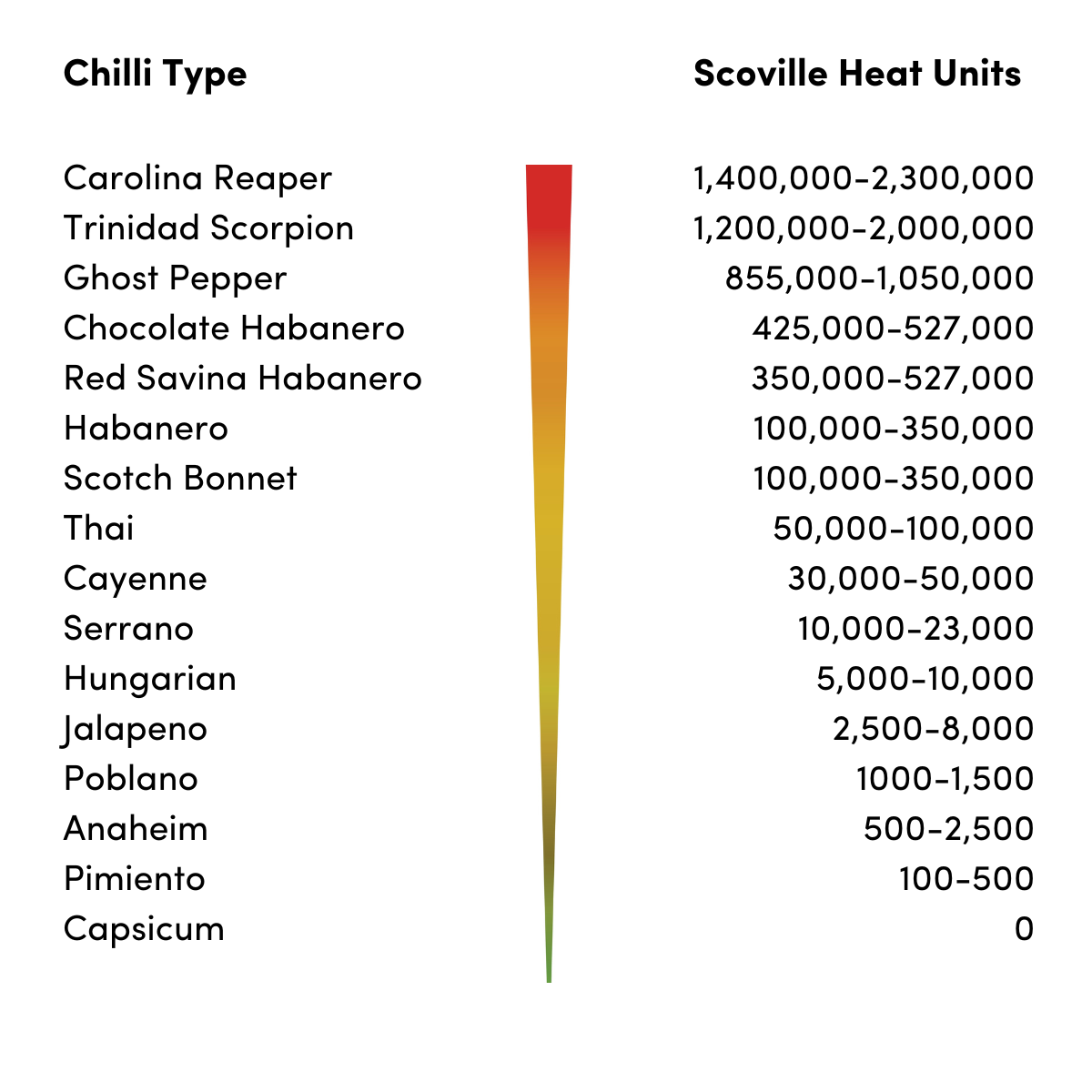
Choosing Your Ideal Pepper Heat
The SHUs of chillies can measure from zero for a standard capsicum, with the very mildest pimiento peppers measuring between 100 to 500. Real heat starts to arrive at between 2,500 and 8,000 for a jalapeno, passing through 50,000 or so for a Thai pepper, and reaches up to several million SHUs for the very hottest peppers specifically bred for their eye-watering pungency. Examples of these extreme chillies include the Trinidad Scorpion pepper, rated at around 1,200,000 SHU, and the Carolina Reaper which can tip the scales at an infernal 2.3 million SHU or even more.
At the very top end of the heat table, the official world's hottest chilli is currently the Pepper X, developed by pepper farmer Ed Currie through cross-breeding his hottest crops over a full decade. The result has an average rating of 2,693,000 SHU, comfortably hotter than Currie's previous champion the Carolina Reaper, while individual peppers can reach a blistering 3,180,000 SHU under ideal growing conditions.
Outside of these extremes, typical peppers such as cayenne clock in at around the 30,000 to 50,000 SHU mark, stronger examples such as the habanero measure from 100,000 upwards, while the hottest 'traditional' varieties in the ghost family hover at around the 800,000 to one million mark.
No matter whether you're a true heat lover or prefer a less aggressive blend of flavour and spice, making a note of the heat rating before purchasing seeds will help you choose the ideal range of chillies for your taste and cooking styles.
